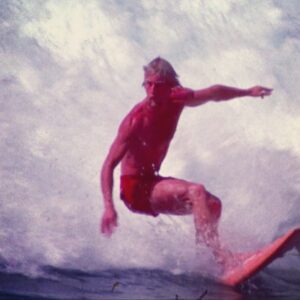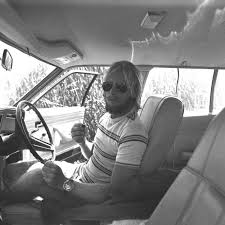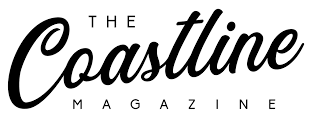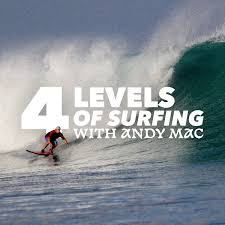Beginners
Starting out at the learner’s level, learning the basics, paddling, duck diving, and position to ride a wave either broken or unbroken. Depending on time in the water which could be daily, going to the next level of catching waves and standing and then turning could take between 12 months to two years. Starting on the right board in terms of weight and size is vital to improving your success rate. Longboards, softboards, boards with volume are best to begin to learn on. Board lengths could vary from 6ft to 10ft longboards.
Intermediate
Having gained the confidence and ability to paddle out past the break and line-up the take-off. Once that is achieved it is then a matter of constant practice to achieve manoeuvrability, bottom turn, cutback, position for tube ride, and adapt to a more performance-orientated board can make all the difference such as a mid-length to mid-range model. Board lengths vary from 6ft to 8ft.


Experienced
After at least three years of the first two levels, a surfer should have acquired the dexterity to turn using the rail to double pump and set up the initial bottom turn. From that setup turn, it’s a matter of choosing the right option for maximum speed to crack the lip, position for a barrel or have enough speed to attempt an aerial move, busting out the fins to demonstrate your elevated level of ability. Utilising a high-performance board whether it be a twin fin fish, state-of-the-art shortboard shape mostly between 5ft – 6ft or for the longboarders learning the art of tip riding and pivoting turns on 9ft – 10ft logs.
Professional
Obviously showing the ability to compete at the highest level using the fastest state of art design ridden by World Tour Pros mostly under 6ft lengths unless having the luxury to use a big wave gun in triple overhead waves. This is the elite level of surfing which amounts for about 10% of the surfing population. There are more free surfers’ early morning or after work, recreational or weekend surfers than professionals. Standout examples are in a class of their own and be considered better than the pros especially when the waves are pumping. The crucial element is having the right equipment and having the experience that counts. What sets the free surfers apart from the pros, is not having to confine their natural surfing ability by the judging criteria. However, competition can bring out the best in a surfer and 11 times World Champion Kelly Slater is the best example of that. The other difference between talented free surfers is that they can experiment with a diverse range of designs whereas the pros stick to their thrusters. Once again Kelly loves excelling on his quad. The Pros will ride under 6ft boards unless confronted by big surf where they will need to use their step-up boards. Free surfers can ride anything as small as 5ft such as Rasta and Asher Pacey. or charge on an 8ft gun at Cloudbreak, Fiji or Outer Reefs in Hawaii.

